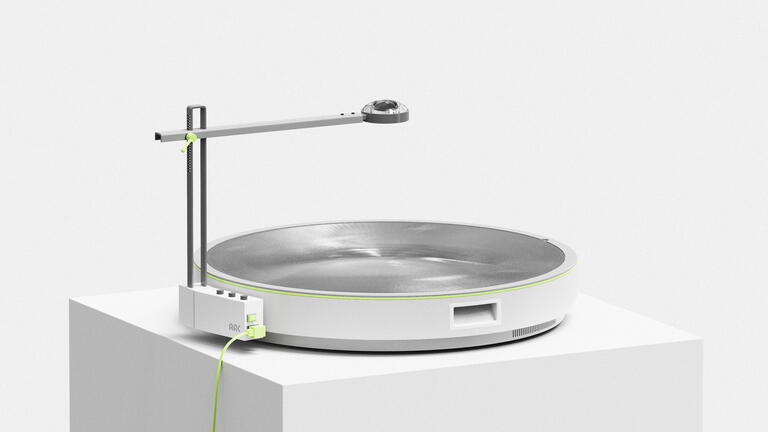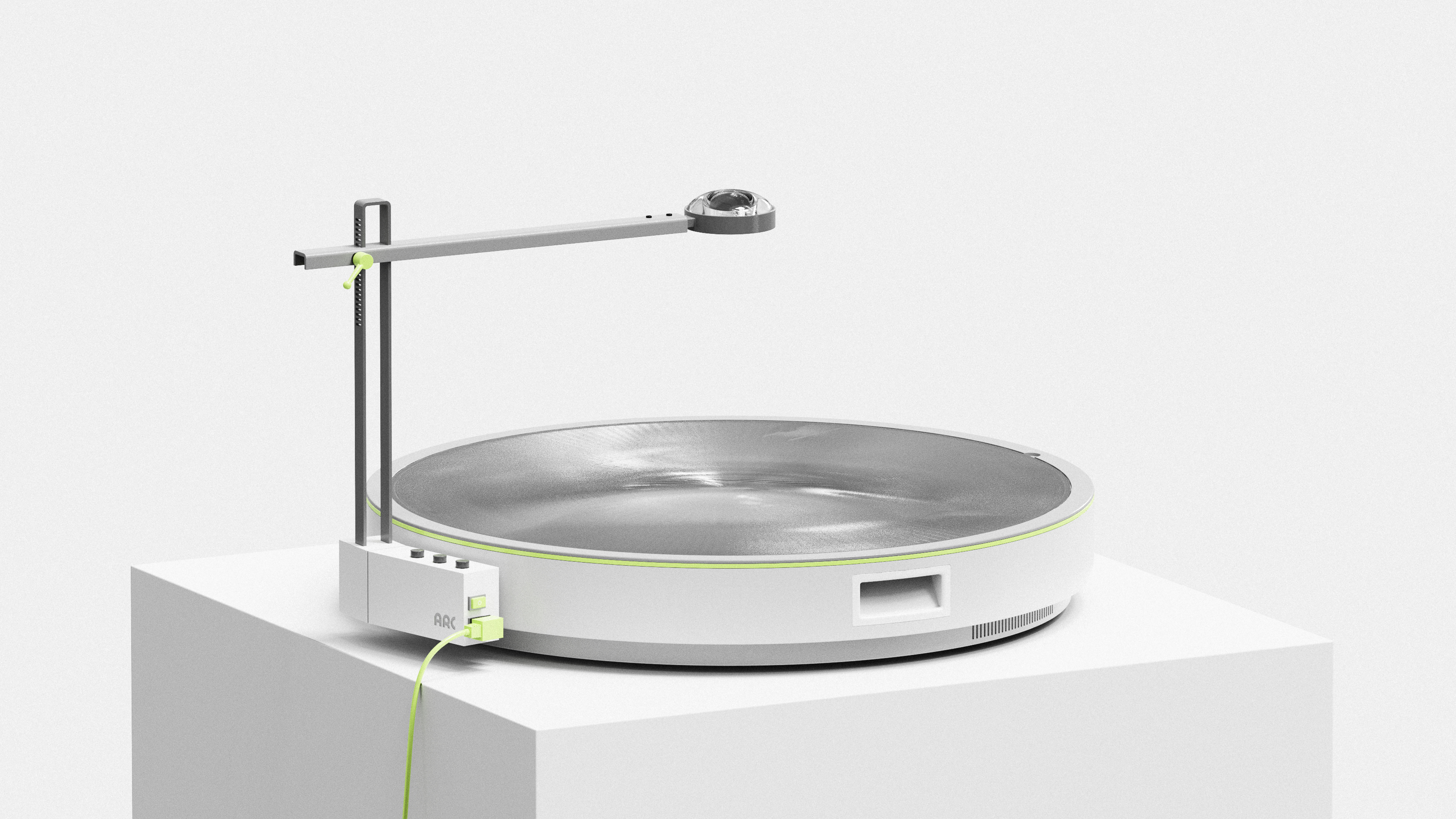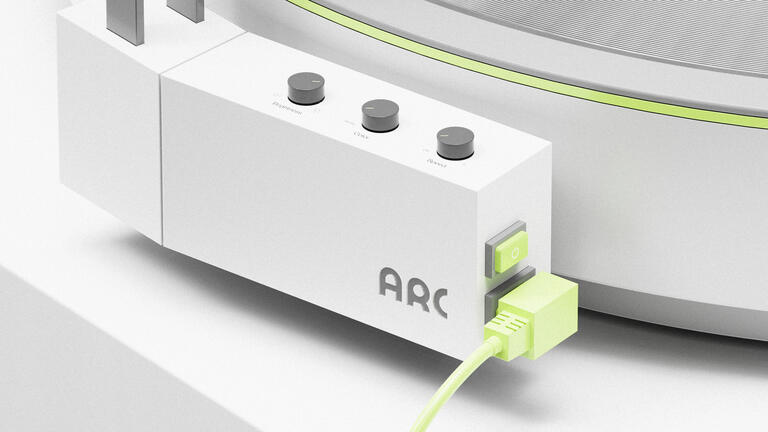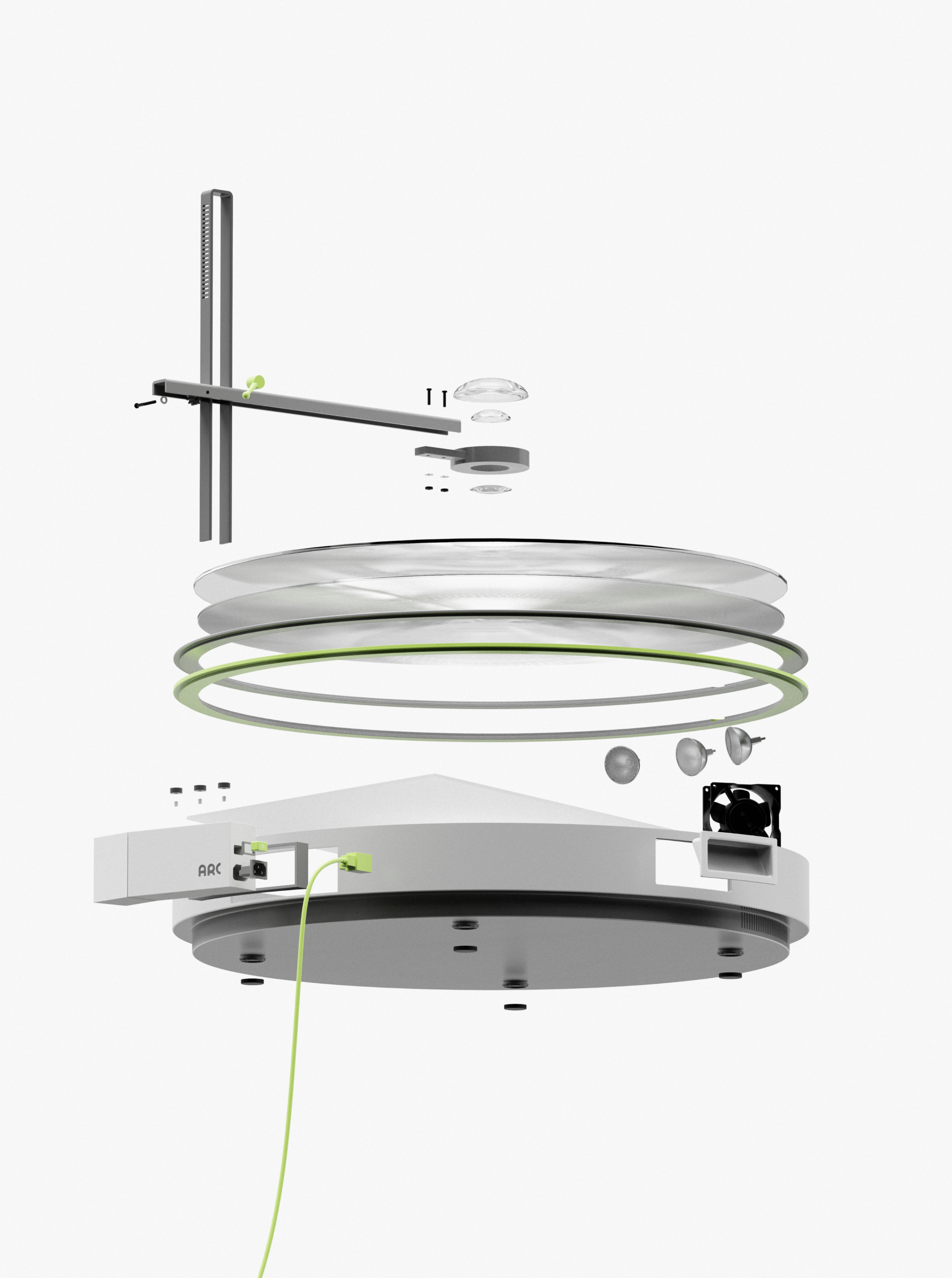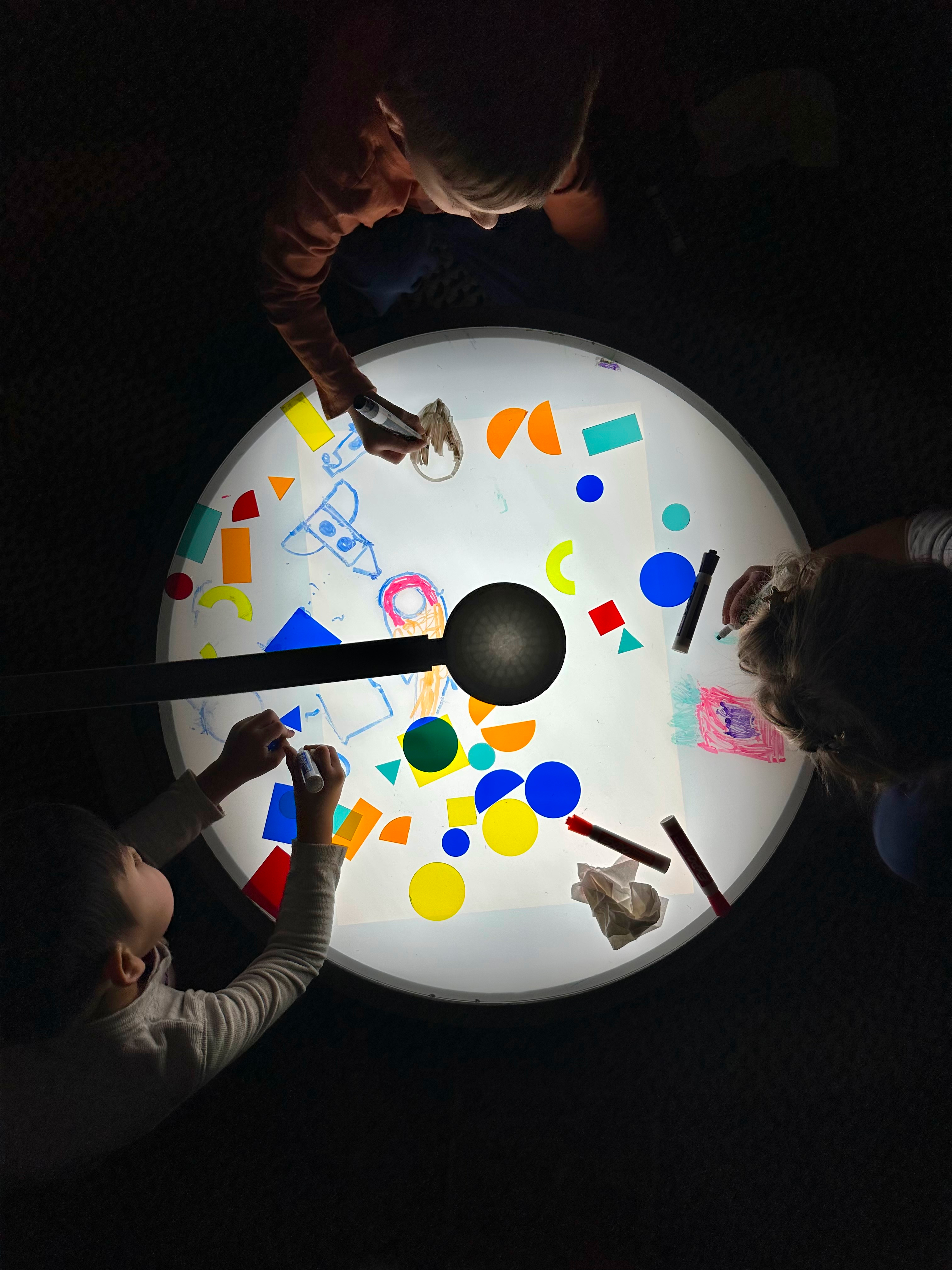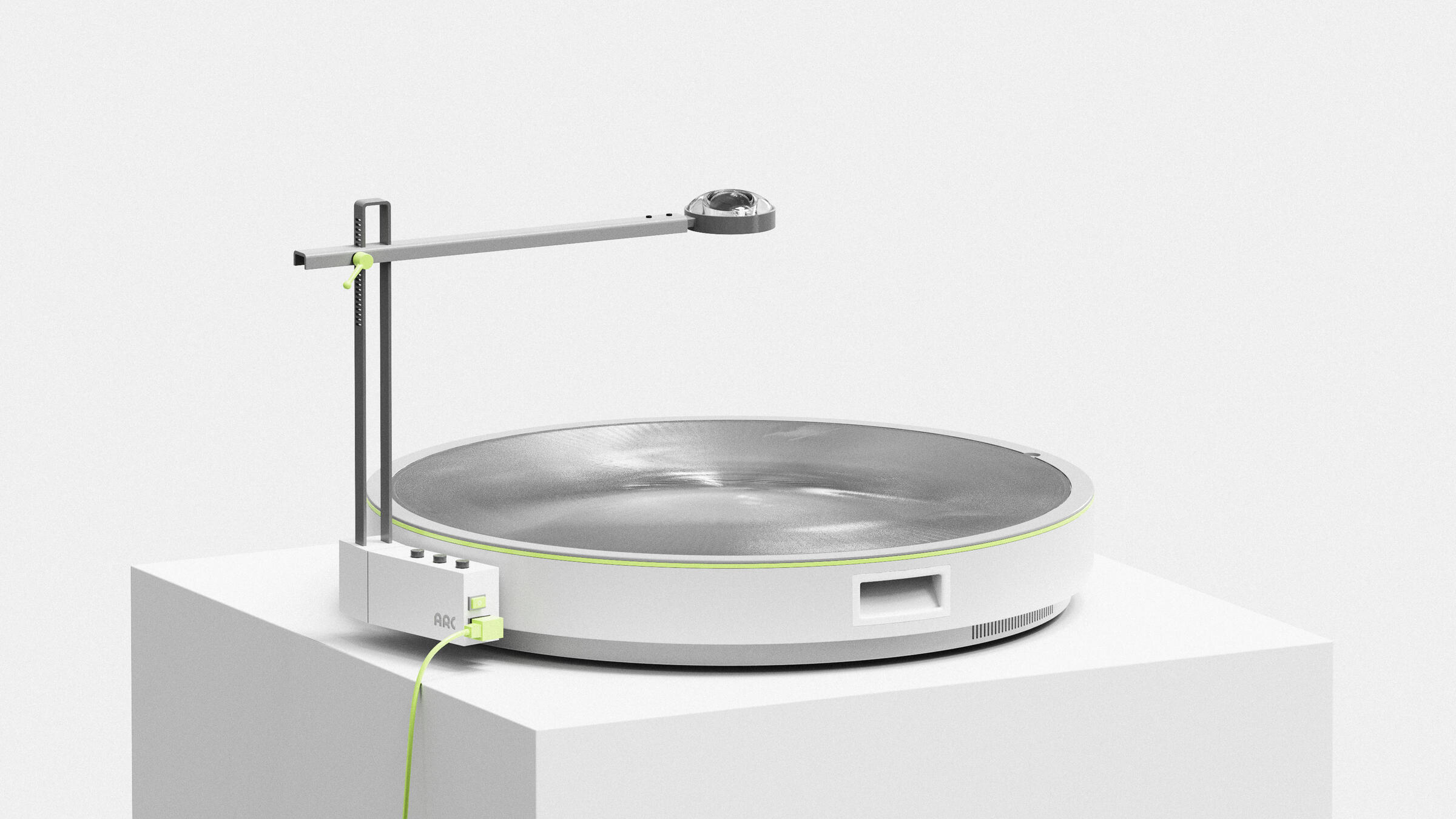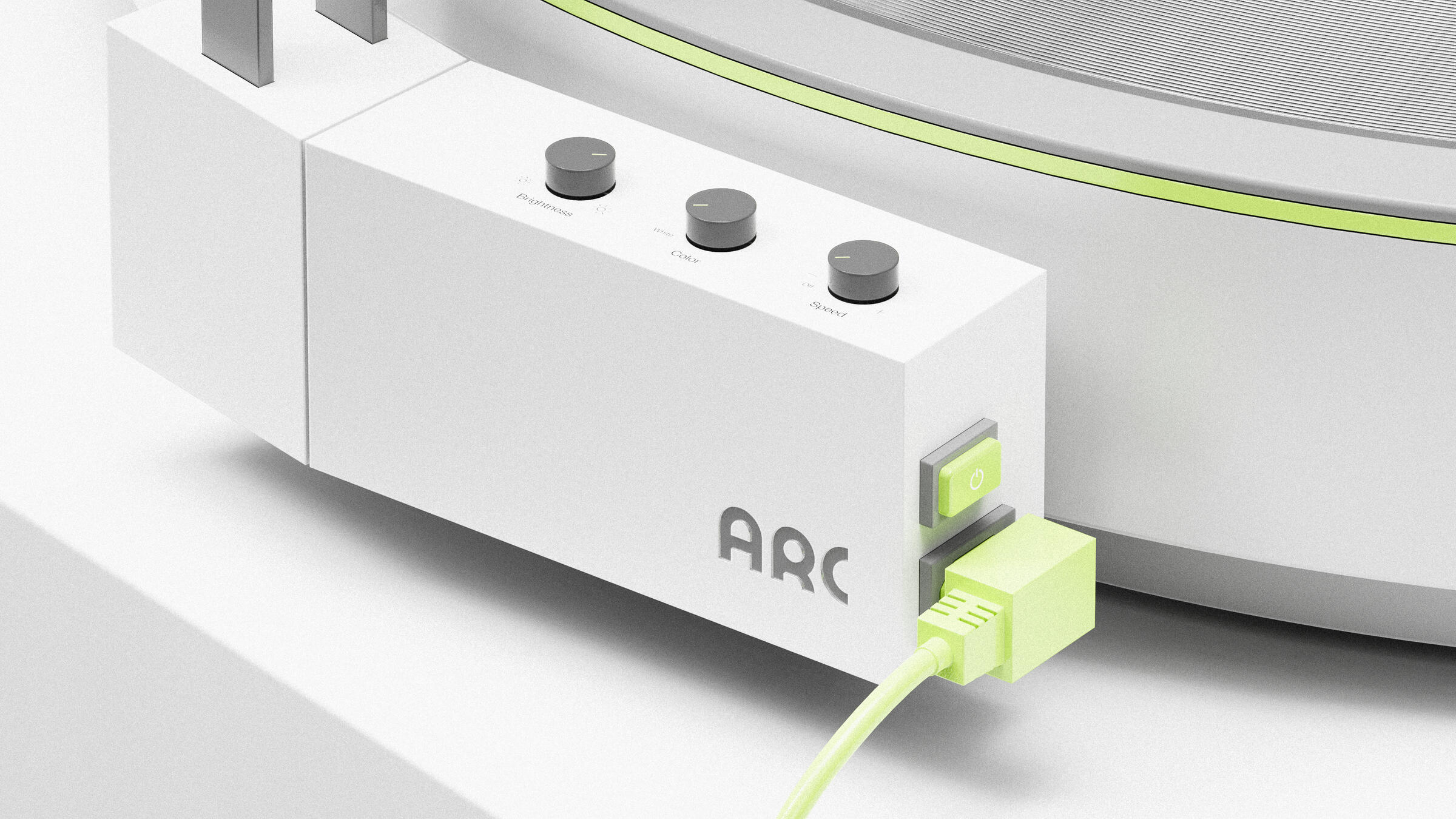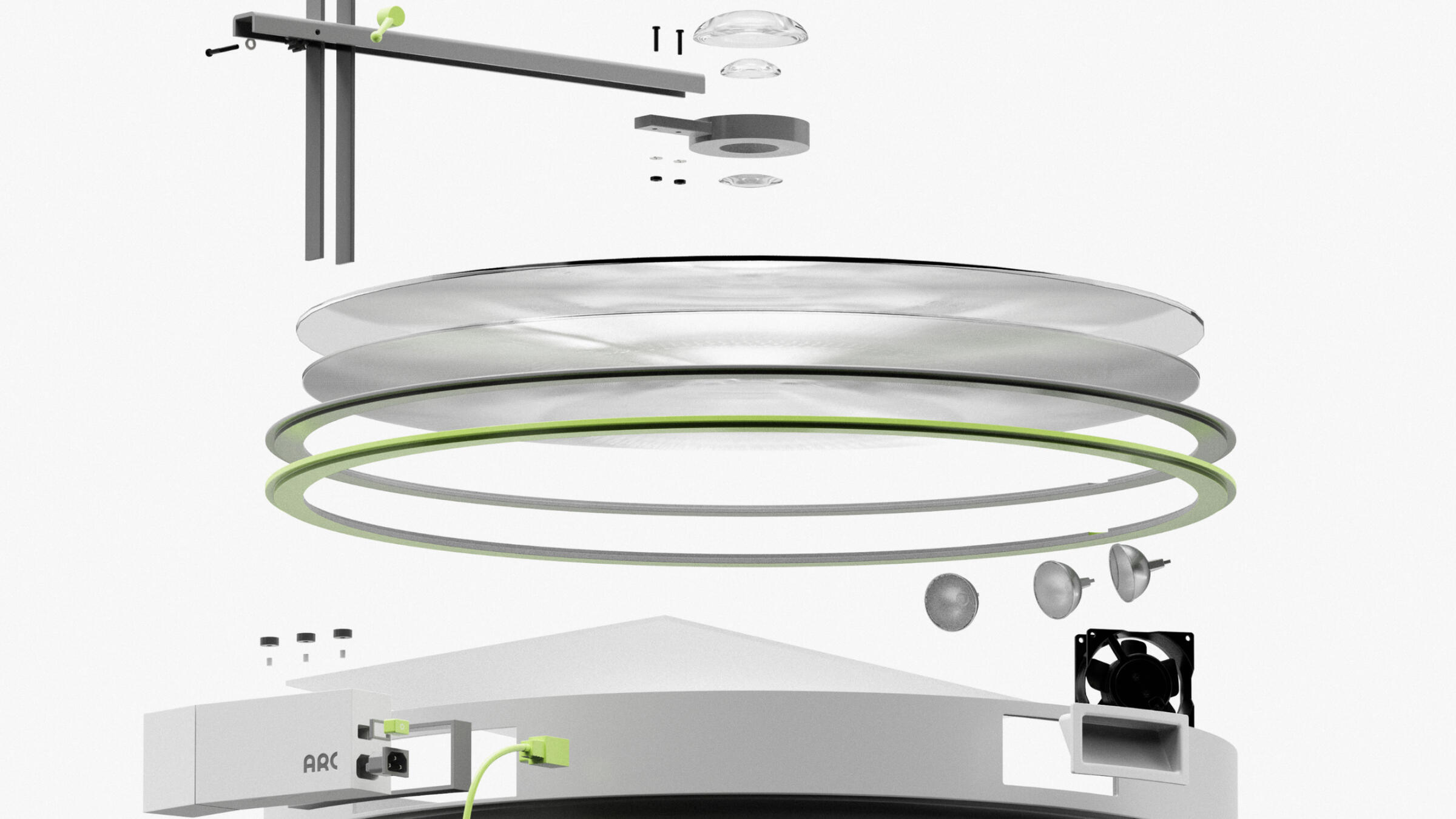Arc
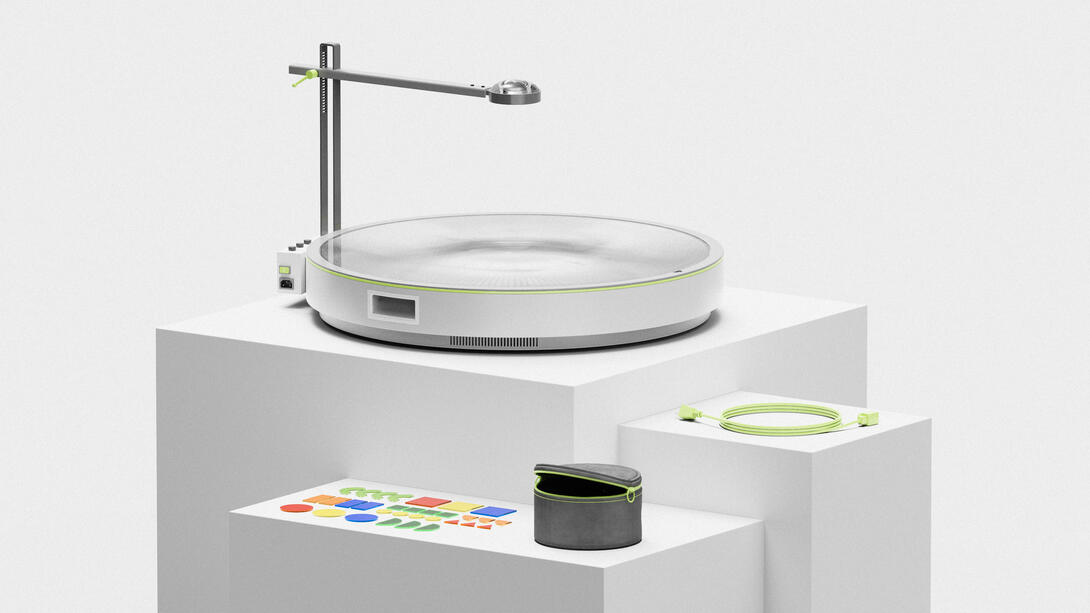
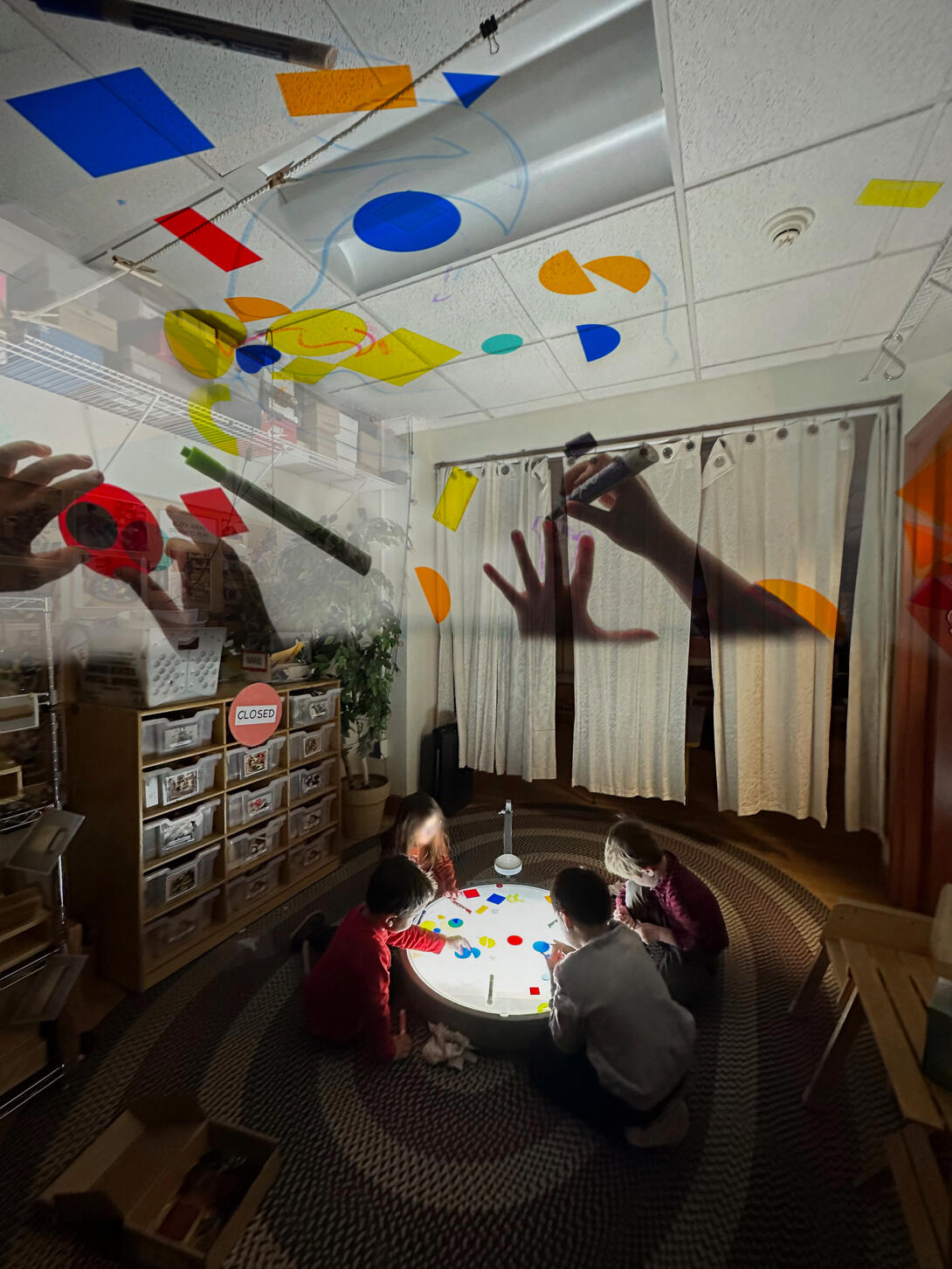
Arc is a new kind of overhead projector that enables kids to co-create stories and worlds— and be immersed in them together. Designed especially with those with language barriers in mind, the device aims to help all kids feel a greater sense of belonging by lowering barriers for co-creating and engaging a shared sense of wonder.
A circular form affords everyone around the object equal agency to create an image together, with the outer perimeter being understood as "ground" and the middle of the circle "sky." Instead of a flat lens that projects an image onto the wall (like a regular analog overhead projector), this one uses a spherical lens to map the circular image all around the ceiling and upper walls of the room. The result is a projected environment directly immersing users in the world they are creating together at their fingertips, in real time.
Inspired by the magic of analog light projections and the way they bring the people in a room together. This interaction is about fostering a sense of belonging that transcends words, cultures, and backgrounds.
Project Approach
The project's goal was to materialize an agenda that is personally important to me as a designer. Through considering what kind of world and interactions I want to help realize, I decided to design for intimacy, connection, and belonging.
Such an abstract agenda required me to narrow down a target user group, prompting the question, what groups may be more prone to feelings of loneliness?
Inspired by my own immigrant background, experience teaching bilingual and immigrant kids at a Korean-American church, and Pittsburgh's large refugee population, I decided to design for immigrant and refugee children whose language barriers may make it harder to feel a sense of belonging.
Research affirmed the need for interventions in this area: global migration is higher than ever and immigrant children face higher risk of bullying, affecting their long-term sense of self-esteem and worth (Encyclopedia of Educational Philosophy and Theory "Phenomenology of Inclusion, Belonging, and Language", Shenfield "Understanding The Challenges Faced By Immigrant Children", Kirova "Social Isolation, Loneliness and Immigrant Students' Search for Belongingness").
The opportunity was to tap into children's innate instinct for play to provide "... opportunities to connect to their peers as they participate in shared meaningful experiences as a possibility to form social bonds" (Kirova "Social Isolation, Loneliness and Immigrant Students' Search for Belongingness").
Research
During early development, I researched relevant products involving play and sharing, visited a local refugee kids' weekend program to understand context, and interviewed immigrants, parents of immigrant children, and teachers.
Initially, I had gravitated toward creating a translation device. However, quotes such as "I had an electronic dictionary, it was fun to fidget with but I never actually used it to talk to other kids, that would have been weird" made me realize that a device for only the "new kid" to use might be even more alienating. Other insights such as "I appreciated games like handball that I could catch onto easily and intuitively," and "I was always drawing in class, that's how I got close to people. I became friends with someone because he started drawing back to me one day," pointed to a direction affording a sense of belonging through an intuitive and creative group interaction.
Immersive and Enchanting
I was reminded of analog overhead projectors and the unique atmosphere of intimacy and wonder they create that bring the people in a room together. I wanted to incorporate this immersive, larger-than-life sense of wonder into the interaction.
How it Works
A spherical lens projects the circular image across the ceiling and walls of the room, immersing users into the image they're building together in real-time.
Intended to be facilitated by a teacher or similar figure, there are options to change the color and brightness of the light, expanding storytelling capabilities. The "stage" can also rotate at an adjustable speed, affectively animating the created image to spin overhead.
Form Language
An aesthetic goal was to avoid the object looking too "kiddie." Instead, key words for form language included tool-like and essential. Since the overall form factor is so distinct and circular, I embraced pure geometries and highlighted 90 degree relationships, particularly using bent sheet metal.
Form Development
Considerations included the number of poles, knob placement, direction of sheet metal bends, and cord, handles, and button integration.
Size and proportion were informed by follow-up contextual inquiries at the CMU Children's School, observing their playtimes and the furniture used for group activities such as board games.
Internal bulbs, fans, and the mirror are strategically organized for thermal management, accounting for the greater amount of light needed for this device as opposed to a regular overhead projector.
Branding and Color
Arc means part of a circle, analogous to the way each child using the object becomes part of a whole. It can also be used to describe the light formed by a connection between electrodes.
Grey was chosen for the overall color so that the focus would be on the interaction, not so much the object itself. The light yellow-green acts as both a playful pop of color and a guide for the interaction points.
Product Kit
Arc comes with its own cord, tiles, and bag for storage. Tile shapes and colors were kept primitive for open-ended, non-prescriptive play.
Testing and Insights
A scale, lit model was taken back to the children's school for a final round of validation. Insights included:
It's Intuitive, but Facilitation Helps
The surface and dry-erase markers were all they needed to see to get started. However, prompting of how we might build a neighborhood or forest, etc. around the circle helped define the interaction more clearly.
The Circular Surface Reads As a "World."
They immediately understood the outer perimeter as the ground and the middle of the circle as the sky. They created rockets to blast off from the "ground" and meteors to fly around the "sky."
They Make Up Their Own Rules
Groups began to form their own systems and rules in creating their "world", including streets to build houses on and heart-force-fields to protect from tornado-swirls.
Everyone Participates
All the children— talkative or quiet, outgoing or shy— had a place around the table and actively contributed to the image.
Feedback
"I'm so glad you came to show us this!" — Clementine, 6
"I love the fact that it's a very simple, intuitive activity that all kids can participate in, just like playing in a sandbox or with a soccer ball. The light projection part definitely takes it a step further." — Bailey, Teacher's Assistant
"The kids love playing with light stuff. Whenever the university has an overhead projector they need to get rid of, they actually contact us! But they're quite small, so the large circular surface is a game-changer for everyone to be able to sit around. This is something we'd love to have in the classroom." — Mrs. S, Teacher
